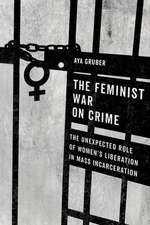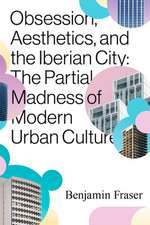The Eugenics Movement: An Encyclopedia
Autor Ruth Clifford Engsen Limba Engleză Hardback – 29 iun 2005 – vârsta până la 17 ani
Preț: 370.15 lei
Preț vechi: 641.07 lei
-42% Nou
Puncte Express: 555
Preț estimativ în valută:
70.83€ • 75.74$ • 59.06£
70.83€ • 75.74$ • 59.06£
Carte tipărită la comandă
Livrare economică 18 aprilie-02 mai
Preluare comenzi: 021 569.72.76
Specificații
ISBN-13: 9780313327919
ISBN-10: 0313327912
Pagini: 304
Dimensiuni: 178 x 254 x 26 mm
Greutate: 0.8 kg
Editura: Bloomsbury Publishing
Colecția Greenwood
Locul publicării:New York, United States
ISBN-10: 0313327912
Pagini: 304
Dimensiuni: 178 x 254 x 26 mm
Greutate: 0.8 kg
Editura: Bloomsbury Publishing
Colecția Greenwood
Locul publicării:New York, United States
Notă biografică
Ruth Clifford Engs is Professor of Applied Health Science at Indiana University, Bloomington. She has published numerous articles and books, including Clean Living Movements: American Cycles of Health Reform (Praeger, 2000) and The Progressive Era's Health Reform Movement: A Historical Dictionary (Praeger, 2003).
Cuprins
PrefaceAcknowledgmentsList of EntriesIntroductionDictionary EntriesSelected ChronologyIndex
Recenzii
The primary focus of this reference work is the rise of the eugenics movement in the US during the 20th century, with additional coverage of Great Britain and Germany. These three countries were the principle proponents of eugenics, which is essentially the science of improving the human race through selective breeding. Although eugenics has had varying degrees of success over the years, with some well-known followers, it carries a controversial history and is associated with some of the past century's most appalling moments. Following a brief introduction of the basic concept and a short history, the book is organized in an A-Z format listing prominent individuals, organizations, publications, and important historical periods..Recommended. Lower-level undergraduates and above; general readers.
Engs has produced a solid treatment of a topic that should be of particular interest to the reading public at large as well as to students of political ideologies, eugenics, genetics, public health, and modern biology. It is difficult to think of another general introduction as comprehensible as this.
The Eugenics Movement: An Encyclopedia makes a handy and sober guide to the subject..an appropriate selection for public and academic libraries.
[T]his book is the kind of solid, rich, well-crafted compendium on a specialized topic that librarians hand long been able to expect from Greenwood. Its contents provide the beginning and scholarly user with a broad and authoritative introduction to the topic of eugenics, the science of the improvement of the human race by better breeding, in the words of one of its key spokesmen Charles Davenport..Eugenics has become a hot topic of late, thanks to the growth of cultural studies, a new interest in the history of science, and the revival of many of the issues with which it was associated, thanks to recent developments in genetics. One imagines this work providing librarians working with college and high school students, and even some more advances researchers, in beginning to understand the key questions surrounding this topic, and then finding their way to further material on the subject.
Engs provides information concerning prominent people, organizations, publications, conferences, and concepts involved in the hereditarian and eugenics movements from the middle 19th century to 2005. Though she focuses on the early 20th-century in the US, she also discusses links between the past and present and with Britain and German, the other two countries most involved with the eugenic measures and debates. Among her topics are whether such techniques as cloning, genetic engineering, and genetic testing do or do not qualify as eugenics.
In 250 alphabetically arranged entries on people (including birth and death dates), organizations, publications, conferences, and concepts, the author describes how the movement developed and spread. Entries are clearly and succinctly written, with enough length when necessary..Extensive cross-references are in bold type, and further reading is suggested at the end of each entry. While recognizing that some entries and terminology may be offensive, the author points out in her preface that it is important to examine such terms in their historical context. ^LThe information in this unique resource is accurate and current, with events and books from 2004. A list of entries at the front, black-and-white photos, an index, a 20-page chronology (beginning in 1853), and a 14-page bibliography are helpful for locating entries and engaging in further study..This is a recommended resource for large public and academic libraries.
[R]eviews almost 200 years of history and packs in reference entries on different eugenics movements, theories, history, and laws around the world. An intriguing health and social issues title which college-level collections won't want to miss.
Engs has produced a solid treatment of a topic that should be of particular interest to the reading public at large as well as to students of political ideologies, eugenics, genetics, public health, and modern biology. It is difficult to think of another general introduction as comprehensible as this.
The Eugenics Movement: An Encyclopedia makes a handy and sober guide to the subject..an appropriate selection for public and academic libraries.
[T]his book is the kind of solid, rich, well-crafted compendium on a specialized topic that librarians hand long been able to expect from Greenwood. Its contents provide the beginning and scholarly user with a broad and authoritative introduction to the topic of eugenics, the science of the improvement of the human race by better breeding, in the words of one of its key spokesmen Charles Davenport..Eugenics has become a hot topic of late, thanks to the growth of cultural studies, a new interest in the history of science, and the revival of many of the issues with which it was associated, thanks to recent developments in genetics. One imagines this work providing librarians working with college and high school students, and even some more advances researchers, in beginning to understand the key questions surrounding this topic, and then finding their way to further material on the subject.
Engs provides information concerning prominent people, organizations, publications, conferences, and concepts involved in the hereditarian and eugenics movements from the middle 19th century to 2005. Though she focuses on the early 20th-century in the US, she also discusses links between the past and present and with Britain and German, the other two countries most involved with the eugenic measures and debates. Among her topics are whether such techniques as cloning, genetic engineering, and genetic testing do or do not qualify as eugenics.
In 250 alphabetically arranged entries on people (including birth and death dates), organizations, publications, conferences, and concepts, the author describes how the movement developed and spread. Entries are clearly and succinctly written, with enough length when necessary..Extensive cross-references are in bold type, and further reading is suggested at the end of each entry. While recognizing that some entries and terminology may be offensive, the author points out in her preface that it is important to examine such terms in their historical context. ^LThe information in this unique resource is accurate and current, with events and books from 2004. A list of entries at the front, black-and-white photos, an index, a 20-page chronology (beginning in 1853), and a 14-page bibliography are helpful for locating entries and engaging in further study..This is a recommended resource for large public and academic libraries.
[R]eviews almost 200 years of history and packs in reference entries on different eugenics movements, theories, history, and laws around the world. An intriguing health and social issues title which college-level collections won't want to miss.



















